What is the meaning of the color blue?
Color blue
What is the meaning of the color blue?
The color blue is a cold color like green and violet, and is part of the so-called primary psychological colors. It gets its name from lapis lazuli, a semi-precious stone from which a pigment of that hue was extracted.
The meaning of blue varies according to the field and also according to its shades. Generally speaking, blue represents stability. Navy blue is associated with depth, the order of the sacred, immortality and power. On the other hand, the azure blue is related to tranquility, protection, health, understanding and generosity. Many more follow from these meanings depending on point of view or context.
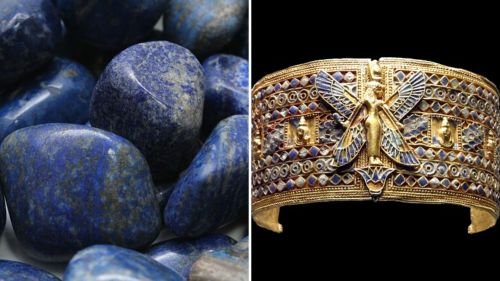 Left: lapis lazuli stones. Right: Egyptian bracelet inlaid with lapis lazuli.
Left: lapis lazuli stones. Right: Egyptian bracelet inlaid with lapis lazuli.
Trust and stability
From a color psychology point of view , blue conveys confidence and stability as dominant meanings. These meanings derive from the perception of the color of the celestial vault and the sea, which occupy most of the visible surface. For this reason, today the color blue is used in many areas of collective interest.
For example ,

- The uniforms of the security or police forces;
- The choice of clothing for politicians and executives;
- The corporate image of insurance companies (Liberty Seguros), banks (BBVA), the automobile industry (Ford), pharmaceutical companies (Pfaizer) and the media (Disney, Warner, HBO), among others.
Peace and fidelity

Due to its association with the sky, blue, especially azure blue, is also perceived as a symbol of serenity, calm, peace, order, spaciousness, trust, honesty and fidelity (hence friendship and sympathy).
Rationalism, science and innovation
Blue also represents intelligence, wisdom and understanding, fruits of serenity and stability. For this reason, in its contemporary interpretation, it is associated with rationalism and, more specifically, with science, technology and innovation.

For example , blue is the image of technology companies such as IBM, Samsung, HP, Facebook or Twitter.
Sadness and melancholy
Eventually, as opposed to the vibrancy of warm colors, certain shades of blue can represent sadness, depression, nostalgia, or superstition.
 Sadness, character in the animated film Intensely ( Inside Out ) Disney-Pixar.
Sadness, character in the animated film Intensely ( Inside Out ) Disney-Pixar.
For example , we can point out its relationship with the name of the musical genre blues , a linguistic loan from the expression blue (devil) s which means 'blue demons' in English. This expression is nothing more than a metaphor for melancholy.
Male gender

Since the middle of the 20th century, as a result of modern marketing techniques, the color blue has been attributed the representation of the male gender. This trend became general in the 1970s. However, until the first half of the 20th century, babies used to wear white, regardless of their biological sex. Even in some societies like the German one, blue was rather considered a feminine color insofar as it expressed serenity and delicacy.
Socio-economic distinction
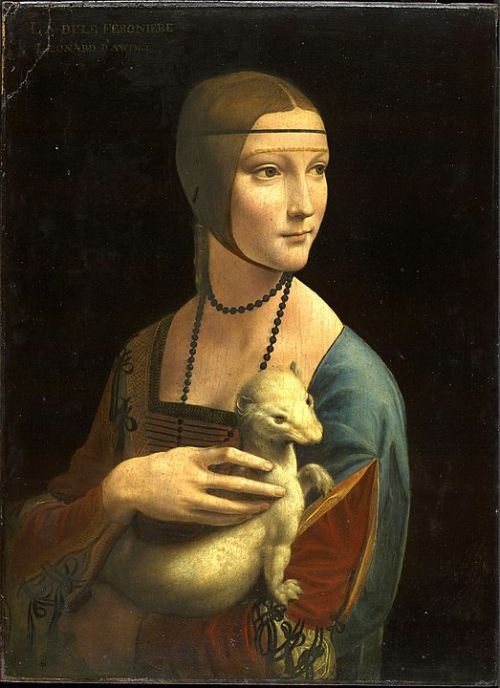 Leonardo da Vinci: The Lady with the Ermine .
Leonardo da Vinci: The Lady with the Ermine .
In the old days, because the blue pigment came from lapis lazuli and was very expensive to obtain, its use revealed the purchasing power of the client who commissioned the work. Therefore, color was associated with social distinction and nobility. Hence the importance of blue in heraldry.
In addition, in the past it was said that the nobility had "blue blood." This is because the nobles, who delegated the work of the land to the subjects, were always protected from sunlight. Because of this, their skins were paler and the blue veins were more visible.
Divinity and spirituality
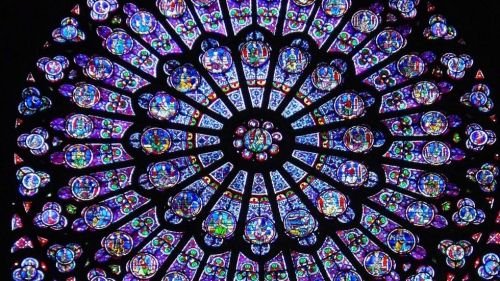 Rose window of the Cathedral of Chartrés, France, from which the name of the tone "Chartrés blue" derives.
Rose window of the Cathedral of Chartrés, France, from which the name of the tone "Chartrés blue" derives.
In Western sacred art, blue alluded to the spiritual virtues of fidelity, trust, peace, and heavenly wisdom. Over time, it was also used to dress certain holy characters with the same dignity as nobles.
In contrast, Byzantine art used blue as a symbol of the human since the end of the iconoclastic struggles. It was opposed to red, the color of blood and a symbol of life and, therefore, of the divine.
Types of blue color
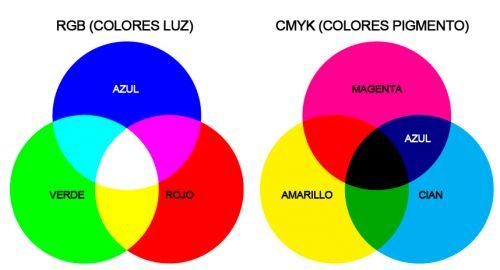
For the artistic pictorial tradition, blue is a primary color along with red and yellow (RYG). In the additive light-based color system (RGB), the primary colors are blue, green, and red. In the pigment-based subtractive color synthesis (CMYK) model, blue is a secondary color.
There are many shades of blue, as well as each color. Among the most important we can point out the following:
| Blue | Cerulean blue | Majorelle Blue |
| Electric blue | Indigo | Glaucous blue |
| Azure | Orcela | Navy blue |
| Indigo | Turkey | Light blue |
| Cobalt | Sapphire | Imperial blue |
| Prussian blue | Munsell Blue | Blue tea |
Next, let's see an image that represents the main shades of blue and their different gradations according to use.
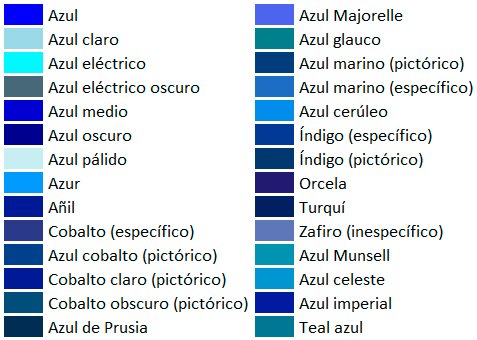
How to make the color blue
To achieve the blue color, regardless of the chromatic variation, a base of cyan (cyan) will always be necessary, one of the primary colors according to the CMYK model. Mixing cyan with magenta produces basic blue.
- Navy blue: mix a base of blue with orange or purple, depending on the desired effect. It should always be done little by little to measure the result.
- Sky blue: mix blue with magenta in a ratio of 10 to less than 1 respectively. Then add white little by little.
- Turquoise blue: mix cyan with yellow gradually. The mixture can be lightened or darkened with black and white respectively.
- Update date: March 6, 2021.
Recommended Contents